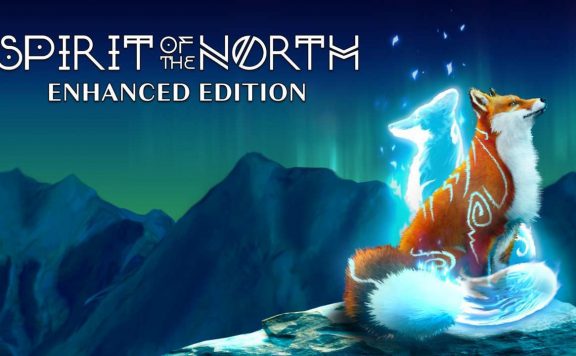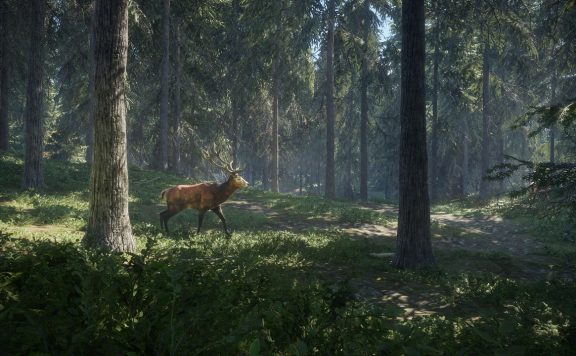Rising Hell is the latest game from developers Tahoe Games and Toge Productions and publisher Chorus, and is a drastic departure from Toge/Chorus’ last collaboration, Coffee Talk – a narrative-focused coffee house sim. Rising Hell is a vertical action-platforming roguelite that has you climbing a hellish tower and is fuelled by a heavy metal soundtrack that is a fantastic fit for the hectic and mostly fast-paced gameplay. The only similarity between the two games is the use of pixel art for the graphics, although they are substantially different styles. Can this demonic game keep you possessed in its grasp or does it feel more like you’re stuck in purgatory?

The story in Rising Hell is simple but adequately lays out the premise of the game without feeling like it’s being bogged down. The intro animation tells the player that after Lucifer’s rebellion all the demons of hell were trapped in a gigantic otherworldly tree called Zaqqoum. The protagonists decide they want their freedom but will need to battle their way through three floors and defeat the four archdemons. If you can conquer this task you’ll get an additional lightly animated cutscene explaining the final narrative of the game. I was able to beat the game with two of the characters and it was nice seeing each one featured in the final cut scenes instead of a silhouette or just the main character, Arok – a common practice in a lot of smaller scale games. I don’t think there were any story elements in the final cut scenes tailored to the character I was using, but I might be wrong. The cutscenes feature high-quality pixel artwork that is right on the verge of looking like a normal drawing. I should also mention how the developers and publishers have gone out of their way to provide more optional story content in the form of a prequel comic that can be found online (although I had trouble finding the whole thing).
Rising Hell features a common progression system found in many roguelites. There are two forms of currency that can be acquired while playing the game. The first – red souls – are very common and allow you to purchase talents in between levels and from the special shop (that can be found sometimes when entering a warp gate). The talents range from increasing your damage or hit points to making relic-carrying monsters more common. Once purchased, they are applied to your character just for that run. Blight is the second form of currency and is much rarer, but can be used to unlock the two extra characters as well as to permanently unlock relics. Each time you start the game you can select one relic to take with you. The game also features a level-up unlock system. Every time you die or complete the game you gain experience that goes towards making new talents and relics available, but you must then use blight to actually unlock the relic for your characters. The talents however are automatically added to your game’s talent pool. There are forty levels to earn and after playing roughly twelve hours I’m only around level sixteen. The talents and relics seem like they are getting more powerful the higher I get, but the speed at which I level up seems exceptionally slow.

Each of the three characters has their own distinct playstyle which helps keep the game feeling fresh. Arok, who looks sort of like a gothic barbarian-type human (minus a sword) is the starting character and he has a short-range melee claw attack, which started to feel very limiting after playing with him for a bit. Luckily the other two characters, Zelos and Sydna, have ranged attacks and make the gameplay feel more compelling and balanced. After trying them all out, Zelos (a red demon) became my go-to character because his attacks are the quickest and he moves faster than the other two characters. The game has a fast-paced arcadey feel to it, but the slow movement speed of the characters really feels like it’s holding the game back. The movement also feels somewhat awkward and it can be hard to dodge some enemies and their projectiles at times. All of the characters can perform a short dodge warp move to either side and that does help you to avoid being hit. One element of the gameplay I really liked were the various alternate relic weapons you can acquire during the levels, they all seemed very powerful and it was interesting seeing the new attacks each character temporarily gained while using them.
So what about the gameplay sets it apart from other roguelite action-platformers? All three characters can perform a sort of special move called the hellbreak. It is a powerful somersault melee attack performed in mid-air. By default, it is set to auto and will be performed any time you come in contact with an enemy as you jump, both on the way up or while falling to the ground. They can be combo’d together if the enemies are close enough to each other. In addition, you regain your double jump each time you engage an enemy in a hellbreak. The hellbreak move is what gives the game its fast-paced feel since most enemies can be killed with just one hellbreak attack. The downside is that every time you perform the move you boost up into the air, which is not good if there are spikes above you or some other type of trap. In addition, some of the archdemon bosses require quick dodging to avoid being hit, and if you’re stuck in the automatic hellbreak animation or the upward jump then you’re bound to take some damage. I found myself turning auto hellbreak off while fighting the second archdemon and I was able to defeat him much more consistently. It can be turned on/off very quickly from the pause screen.
The tower/tree features three distinct levels with multiple floors on each level each of which seems to have randomly generated layouts. At the top of some floors, you get to choose between two paths, and all the levels and floors have names that fit with the hellscape theme, like Pillars of Dispair and Pounders Gallows in the Pit of Torment level or Nethervenom Stalk and Corrosive Gutter in Beelzebub’s Lair. Everything is animated in detailed pixel artwork, so you can clearly see the blood, gore, and hellish horror in each level. There are a number of unique enemies in each level that provide a nice variety while you play. Another element of variety in the level design is the multiple mini-bosses for each level. Since you can take different paths up the tower in each level you will encounter different mini-bosses as you play depending on the path you took. However, all the mini-bosses are just bigger versions of the regular enemies in each level with more diverse attacks, which was kind of disappointing. The archdemons all provide challenging fights and come in all different sizes. The only thing is; they really slow down the gameplay because you have to constantly read their attacks and dodge and then wait to get in a couple of attacks. I do like how all the enemies, bosses included, can be viewed in the grimoire found in the main menu – you can admire the nice pixel artwork and each one includes a little flavor text blurb.

The main gameplay mode I’ve been describing is the Campaign, but there is also a challenge mode called Gauntlet which features multiple challenge scenarios for each level but can only be played by meeting certain prerequisites in each level of the campaign. These provide a nice change of pace for the game and also a good way to gain relic/talent levels. Each level features the same challenges but there’s a nice overall selection. There are some basic ones like Bloodlust where you have to battle your way up through a few arena rooms of enemies, and Godslayer where you must defeat that level’s archdemon – the second two are pretty tough without any talent upgrades. There are also some more interesting ones like Hellrisen where you have to use the hellbreak move to get to the top of a narrow tower full of enemies with no platforms while being chased by a floor of circular saws; although it’s not quite as hard as it sounds.
The most difficult is the Deathrush challenge which requires you to beat the whole level including the archdemon before the timer gets to zero, but you can gain extra time randomly by killing some enemies. The third level – Citadel of the Faithless – is so tough it seems impossible to finish to me; I’d love to the devs or someone in the community prove that it can be done! Otherwise, I was able to unlock all the achievements except for that one, as well as one cumulative one in the twelve hours I played.
The soundtrack really pulls the game together. I’m not necessarily a fan of heavy metal music but each level’s track made me want to continue my upwards demon-killing spree. I don’t usually turn the music up in the settings menu, but in this case, I did because I felt it really enveloped me in the game. The sound effects fit in well with the game as well, with all sorts of sploogey sounds when an enemy explodes in defeat. One element of the sound design I like is the announcer in the character selection menus and at the start of the game.
Rising Hell doesn’t seem to have the staying power or grasp that some other roguelites have had over me. After I beat the game with the one character I didn’t feel the same pull I get with other games in the genre to try it again. One element that makes subsequent runs more interesting is the Agony level. You start at level one but each time you beat the game with a character you have the option to play at a higher agony level with that character, making the game more difficult. Agony level two makes the enemies deal more damage, I’m unsure what effect higher levels have though. There’s also an easy mode – Redemption mode – that gives you three lives instead of the normal one, but you won’t gain Agony levels when beating the game in this mode. Getting all the achievements will require a few replays since there are achievements for killing each of the minibosses. I am a little curious what the rest of the relics and talents do, but the amount of grind it will take to unlock them doesn’t seem appealing.
Conclusion
Overall Rising Hell is a fun experience. The three different characters and the large number of talents and relics give the game some needed depth and variety, although the unlock system is too stingy. The unique hellbreak move gives the game a fast-paced arcadey feel, but other elements really slow it down, like the awkward movement. The pixel hell that was created for the game does look stunning, and for the price of $10 US, I think it’s definitely worth a try for roguelite fans, or if you’ve ever wanted to try climbing a tower full of demons while headbanging.
This game was reviewed based on Xbox One review code, using an Xbox One console. All of the opinions and insights here are subject to that version. Game provided by publisher.Want to keep up to date with the latest Xt reviews, Xt opinions and Xt content? Follow us on Facebook, Twitter, and YouTube.




